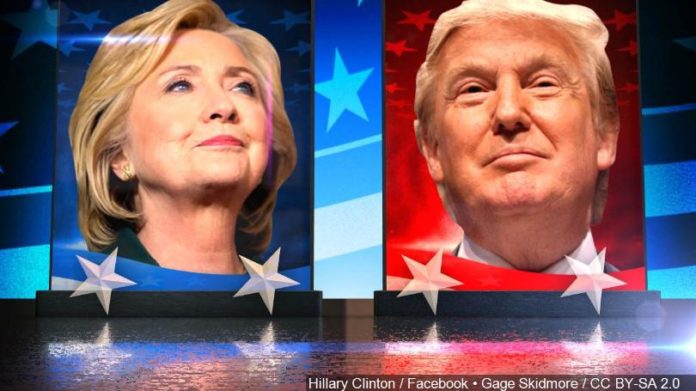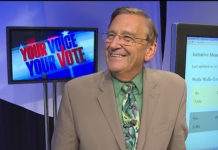By Tim Mohler
Presidential elections provide marketers a unique example of how great brands are born, and a bellwether for emerging communication trends.
Franklin Delano Roosevelt’s fireside chats, Kennedy’s seductive confidence and charm on TV, President Obama riding a social media wave of populist support to victory—these leaders each began as a nascent brand but leveraged the latest communication tools to gain dominance.
In this year’s election, as in business, the polling was wrong, customer segments were overlooked, fears were tapped into and the best arguments didn’t always win.The tone was set by rising income inequality, dissatisfaction and a perception that the political elite only care to listen to voters right before an election.
Astute marketers watched as digital and social media finally eclipsed traditional advertising as the primary conversation driver. While Clinton’s campaign had triple Trump’s TV budget, she lost as he dominated social media, which became the critical connection point between the candidate and electorate. Here are seven lessons we can learn from the election:
1. Branding Is Essential. Donald Trump’s image as a business leader amidst turbulence, lionized in “The Apprentice” and amplified by social media, was essential to his success. He earned 21 billion impressions on Facebook and nine billion on Twitter.
2. Perceptions Are Reality. The simplest form of marketing still works; find and promise a solution to consumers’ deepest fears. A teen fears rejection? Here’s Axe body spray. Fear job loss? Vote Trump. Distrust of traditional media, misinformation and the echo chamber of bias-tuned news feeds increase reliance on friends and pundits. Marketers, we need to understand these emerging unique, insular microsegments.
3. Quick and Dirty. Twenty advisors monitored Mitt Romney’s social campaign; Donald Trump has a smartphone. “He doesn’t run anything by me,” Dan Scavino, his social media director, told CNN. Justin McConney (inventor of Instagram attack ads) is the other key player. Pre-campaign, he convinced a reticent Trump to take WWE’s Vince McMahon up on his ALS Ice Bucket Challenge.
Trump supporters were twice as likely to be WWE fans, in contrast to Clinton’s highly produced ads, Justin, as a self-trained videographer, built quick, guerrilla-style YouTube, Vine and Instagram videos. Those replaced ad buys with earned media. He said, “We…do them right from Trump’s desk… It’s important to be short and direct to be successful.”
4. Broadcast Vs. Participative Media. Trump’s accessibility through Twitter and Facebook video is reminiscent of a time when citizens could walk right into the White House. Clinton capitalized on social media participation with a “Troll Trump” campaign, turning anger into donations.
5. Fact Checks. Sites like Politifact made excellent use of social media’s viral nature with shareable real-time fact checks. Expect this strategy to be adopted quickly by special interests, watchdogs and competitors monitoring brand promises and misdeeds.
6. Beware of Bias. Consumers want to look good to surveyors and themselves, so they fib. Marketing managers often come from very different backgrounds than their consumers. Actually talking to customers, listening to calls and bringing the same diligence and understanding traditionally reserved for entering international markets can bridge the gap.
7. Concentrate on the Right Customers. The Electoral College continues to baffle campaigns. Don’t try to reach everyone; only those who matter. Know their influencers. Don’t assume they’ll always act the same way. Deep dive into the data and realize that segmentation schemes are over-broad and have assumptions. Become the champion of your chosen audience.
Other Notable Tactics.
Clinton’s Spanish Twitter feed positioned her perfectly to capitalize on anti-immigration rhetoric.
The Trump campaign tested around 50,000 ad variations on any given day (RNC in WIRED).
They also capitalized on events (like debates), when social news feeds prioritized political messages by live tweeting and prepackaging posts. Know your industry’s newsworthy moments and be ready to capitalize (war rooms, streamlined approvals).
This election sends a warning to companies and political parties alike who think they know better than the customer, listen only before a sale and talk at, rather than with, consumers. For those brands, their Donald Trump (or AirBnB or Uber) is coming. Today’s Facebook-friendly candidate (or brand) is like a magic mirror: approachable, understanding, reflecting back a voter’s frustrations and hopes, while casting an individually relevant vision.
 Tim Mohler develops digital, social and content campaigns for Point It Digital Marketing. You can reach him at timothym@pointit.com.
Tim Mohler develops digital, social and content campaigns for Point It Digital Marketing. You can reach him at timothym@pointit.com.














